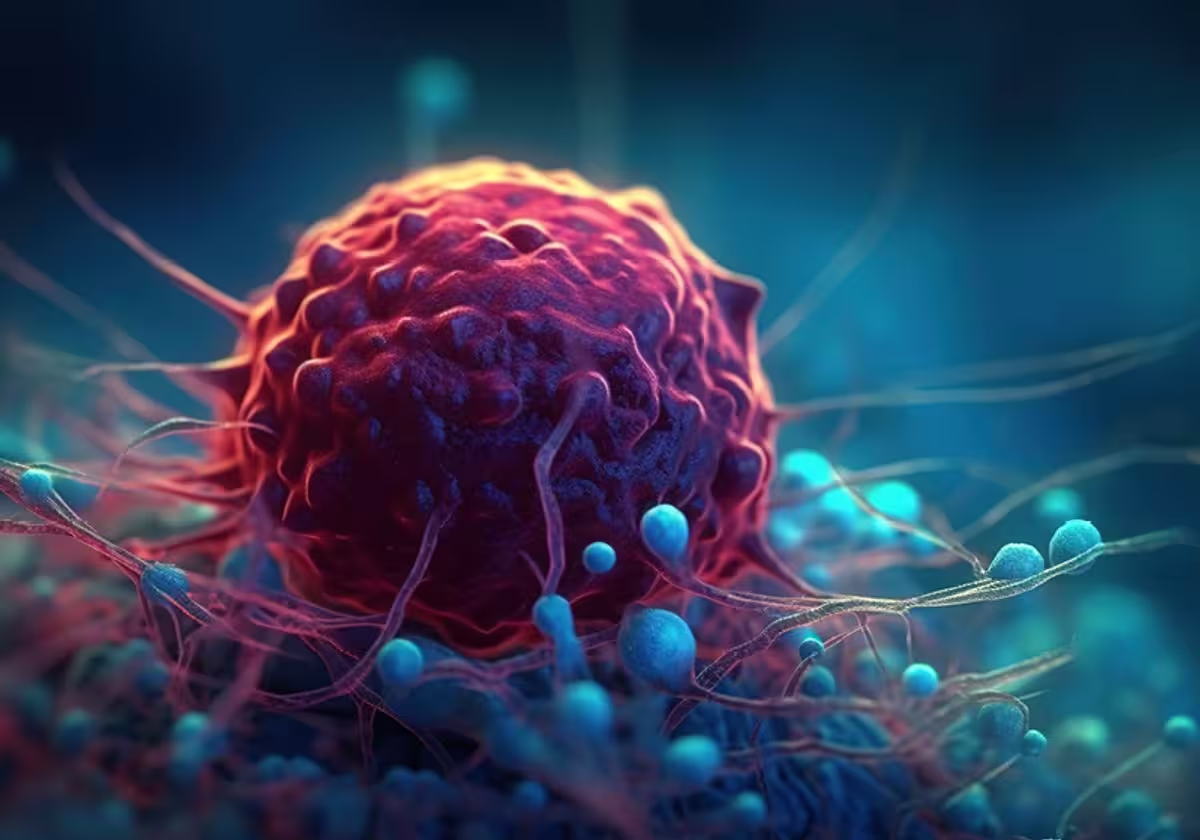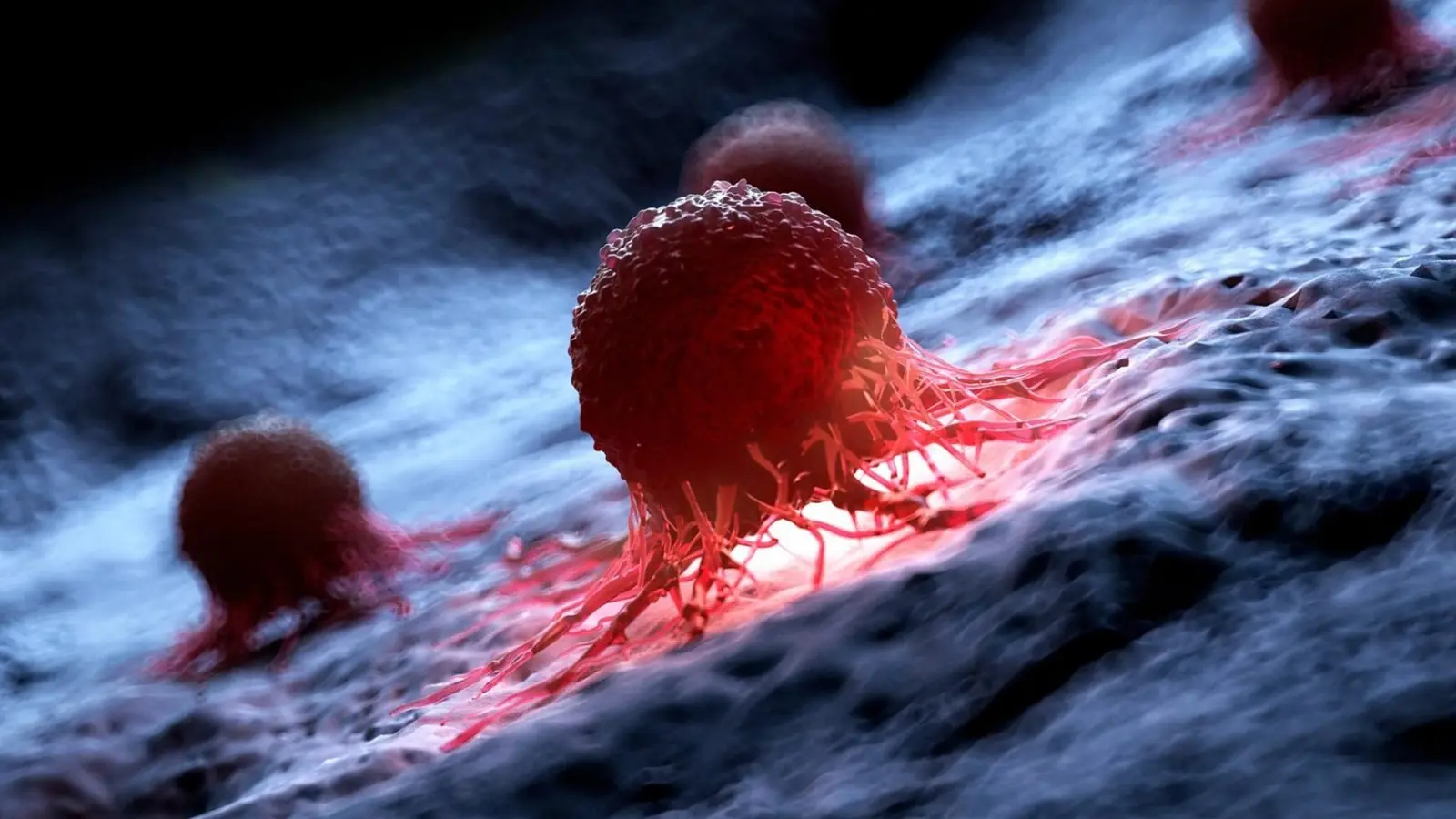5 Minutes
Researchers from the Francis Crick Institute and Vividion Therapeutics have progressed a novel drug candidate into its first human trial—one that selectively blocks a crucial cancer growth signal while sparing healthy cell functions. The approach targets the interaction between RAS, a common cancer-driving gene, and the enzyme PI3K, offering a new strategy for treating a broad swath of RAS- and HER2-driven tumors.
A surgical strike on a stubborn cancer signal
Mutations in the RAS family of genes lock the RAS protein into a permanently active state in roughly one in five cancers. That constant "go" signal drives uncontrolled cell division and tumor growth. Historically, shutting down RAS-driven pathways has been challenging: those same signaling routes are essential for normal physiology, so blunt inhibitors can cause serious side effects—one example being PI3K inhibition that disrupts insulin signaling and raises blood sugar.
Instead of blocking PI3K wholesale, scientists at Vividion and the Francis Crick Institute searched for molecules that specifically prevent PI3K from interacting with RAS, while preserving PI3K’s other roles. Using chemical screening and a bespoke biological assay developed at the Crick, the team pinpointed small compounds that bind near PI3K’s RAS-binding surface and irreversibly obstruct that specific interface.

From molecules to mice: proof in preclinical studies
Once a promising molecule was identified, the teams tested it in mouse models bearing RAS-mutant lung tumors. Treated animals showed halted tumor growth with no measurable disruption to blood glucose—an important safety signal that suggested the drug spares insulin-regulated PI3K activity.
Researchers also evaluated the compound in combination with other inhibitors that act on distinct nodes of the RAS pathway. Combination therapy produced deeper and more durable tumor suppression than any single agent, pointing to a likely clinical strategy: pairing the RAS–PI3K blocker with complementary drugs to outflank resistance and extend responses.
Broader potential: activity beyond RAS-mutant cancers
Surprisingly, the candidate showed activity in mouse tumors driven by HER2 overexpression—an oncogene commonly implicated in breast cancer. HER2 can also recruit PI3K, and interference at the PI3K–interface reduced tumor growth even when RAS was not driving the disease. That unexpected result raises the possibility that the same chemistry could be effective across multiple tumor types that depend on PI3K recruitment, not just those with canonical RAS mutations.
Why this matters: precision without collateral damage
What distinguishes this strategy is its focus on a protein–protein interaction rather than enzymatic inhibition of PI3K activity. By selectively breaking the PI3K–RAS contact, the molecule aims to silence an oncogenic signal while leaving PI3K available for normal cellular tasks like insulin response. If this selectivity holds in humans, clinicians could gain a new targeted therapy that reduces toxicity compared with pan-PI3K inhibitors.
Next steps: human trials and combination testing
The compound has now moved into a first-in-human trial designed to assess safety, tolerability, and early signs of biological activity in patients with tumors harboring RAS or HER2 alterations. The clinical protocol includes arms that evaluate the new drug both alone and in combination with other agents that target steps in the RAS signaling cascade. Investigators will monitor tumor response, pharmacokinetics, and metabolic markers such as blood glucose to confirm the predicted safety profile.
Voices from the lab and clinic
Julian Downward, who leads the Oncogene Biology Laboratory at the Crick, described the effort as a long-sought precision approach: that is, interrupting a cancer-driving interaction without disabling an enzyme’s healthy functions. Matt Patricelli, Chief Scientific Officer at Vividion, emphasized how chemical design enabled molecules that physically block the RAS–PI3K handshake while permitting PI3K to engage with non-oncogenic partners—an advance that made clinical testing possible.
Expert Insight
"Targeting specific protein interfaces is a maturing strategy in oncology," says Dr. Elena Marquez, a translational oncologist (fictional) who reviews early-phase trials. "If these inhibitors can maintain selectivity in patients, they may allow us to combine therapies safely and hit tumors from multiple angles—reducing the chance that cancer cells simply bypass a single blocked pathway."
What to watch for
- Safety signals in early patients, in particular any metabolic side effects related to insulin signaling.
- Biomarker data showing whether the drug truly blocks PI3K recruitment by RAS or HER2 in human tumors.
- Results from combination cohorts that test synergy with other RAS-pathway inhibitors.
- Expansion into additional cancer types if biomarker-driven responses are observed.
By focusing on a single molecular interaction, this research aims to convert decades of biological insight into a treatment that is both effective and tolerable. The first human data will be pivotal: they will show whether the lab’s precision chemistry translates into meaningful patient benefit and a new option for tumors historically driven by RAS or PI3K signaling.
Source: scitechdaily
Comments
ryu.fx
is this even true? blocking one protein interface sounds smart, but will tumors adapt fast? also worried about combo side effects, and metabolic surprises..
labcore
wow this is clever, blocking the RAS-PI3K handshake not the whole enzyme. If it works in ppl, total game changer. Fingers crossed but cautious...


Leave a Comment